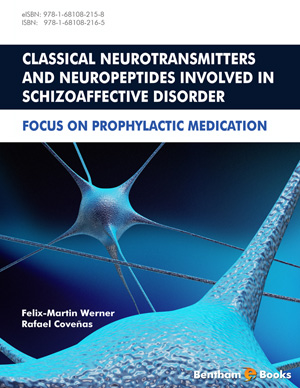Abstract
Schizoaffective disorder has a prevalance of 0.5 %. In this disease, psychotic symptoms are combined with affective, i.e. depressive, manic or bipolar symptoms. The disease is encoded in susceptibility genes, which can be enhanced by stresssful life events or psychotomimitic substances. The neurotransmitter and neuropeptide alterations are described in the involved brain regions in schizophrenic and affective symptoms. In these brain regions, neural networks are described including a multi-neurotransmitter system. The coherence between the hypothalamic-pituitary-adrenal axis and the neurotransmitter alterations will be pointed out. The current pharmacotherapy is reviewed, and some new antipsychotic drugs will be examined critically. The importance of additional sociotherapies and psychoeducaction is underlined, because it enables the schizoaffective patients to be reintegrated into social and perhaps professional lifes.
Keywords: Affective symptom, antipsychotic drug, cognitive symptom, depressive symptom, dopamine, first-episode schizophrenia, gene-environment interaction, hippocampus, manic symptom, mesolimbic system, midbrain, monoamine, negative symptom, neural network, positive symptom, prefrontal cortex, schizoaffective disorder, schizophrenia, serotonin, susceptibility gene.






















